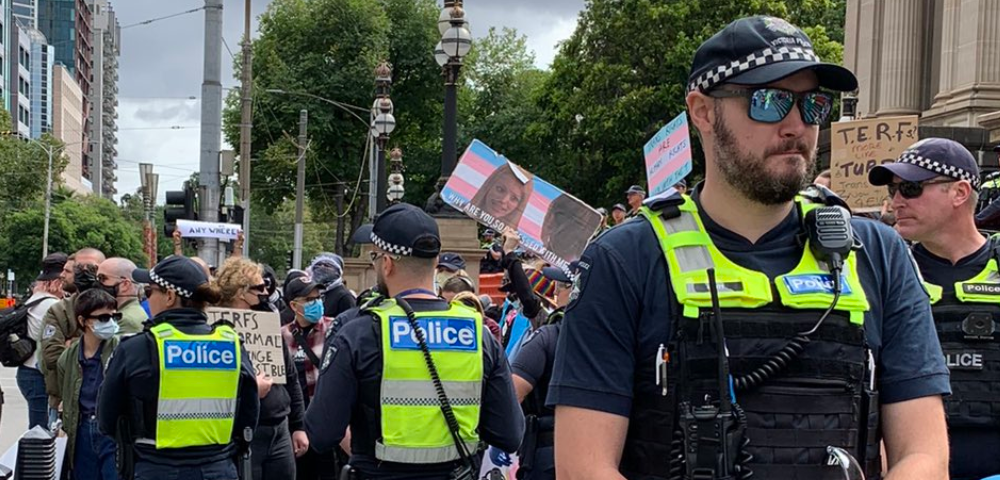
Media reports of Victorian HIV “scare” criticised, policy review urged

REPORTS yesterday of hundreds of Victorian patients being advised to undertake HIV testing following a health care worker disclosing his positive status to the Health Department has raised questions about the need for a national guidelines review and the media reporting of the incident itself.
Denying to comment on the health worker’s profession or location, Victorian Health Minister David Davis confirmed that an incident involving 399 patients had occurred that resulted from news of a worker’s recent HIV diagnosis and a subsequent stepping down from their position.
“The Victorian Department of Health has followed the Communicable Diseases Network of Australia (CDNA) national guidelines for the management of health care workers known to be infected with blood-borne viruses,” a spokesperson for the Health Minister told the Star Observer.
According to national guidelines, HIV-positive health professionals are allowed to work within the heath care industry but are banned from work that involves exposure prone procedures (EPP) — procedures during which the worker could be injured and their blood exposed to a patient’s bloodstream without them knowing.
Victoria’s chief health officer Dr Rosemary Lester said the Department of Health had written to and advised patients in eastern Victoria who had come into contact with the healthcare worker, to undertake a precautionary blood test.
“This is entirely precautionary as there are no reports of any patient contracting HIV from the healthcare worker. But we are erring on the side of caution,” Dr Lester said.
At time of print, 88 people in the Gippsland town of Bairnsdale have reported as receiving negative test results.
There has been concern expressed in the LGBTI and wider community that a blanket reaction to HIV positive health care workers adds to stigma surrounding the virus.
“Following a risk assessment, and along with advice from an expert panel, the Chief Health Officer instituted a lookback,” the Health Minister’s spokesperson said.
“The lookback is not intended to fuel stigma related to HIV. The government has been advised that Chief Health Officer’s approach is to follow up the very low possibility of the infection being passed on, as indicated in the CDNA guidelines.”
Media attention of the incident and fallout has received mixed reactions from Victoria’s leading HIV organisations.
Living Positive Victoria executive officer Brent Allan said that the Department of Health had just followed appropriate protocol.
“I don’t think media reports have added to stigma associated with HIV, I think it’s doing quite the opposite,” he told the Star Observer
“The reports are highlighting the facts that there are risks of contracting HIV [within the health care industry] and it’s raising awareness that there are transmission variables. The national guideline policy is good public health.”
However Victorian AIDS Council chief executive Simon Ruth did not share those opinions and said that media reporting of the incident have shown a clear “lack of understanding of HIV.”
Ruth questioned whether the media was obliged to report on the episode at all given its isolated nature and were instead just contributing unnecessarily to HIV panic.
“The mainstream media’s coverage yesterday indicates there may be a lack of understanding of HIV and risks of HIV transmission. We understand that HIV/AIDS are topical in light of the International AIDS Conference next week in Melbourne, but the risk to the public was understood to be minimal,” Ruth told the Star Observer
“Unfortunately, not every media outlet conveyed the facts in a framework that made this clear to the public and they have possibly needlessly increased the fear being felt by those affected.”
In light of this incident and the upcoming conference, questions have been raised about whether the current national guidelines regarding HIV-positive health workers are outdated and contributing to stigma, and if a review is required.
Within the guidelines there is an acknowledgement that the risk of patients contracting HIV from positive workers is “very low”, noting that the last cases of confirmed transmission were back in 1992 in Florida – resulting in an average infection risk of 0.09 per cent.
The Health Minister’s office has conditionally supported a review into the procedures and policies.
“The government would support any review of the guidelines in the light of any new or emerging evidence,” a spokesperson said.
Ruth praised the Department of Health for following “transparent” and “responsible” procedure and supported the Health Minister’s conditional review of department policy.
“Given the changing nature of HIV in Australia though, we would support an evaluation of these guidelines to ensure they are current with respect to any new and emerging evidence,” Ruth said.
Allan echoed comments from the Victorian Australian Medical Association president Dr Tony Barton, who said the testing was necessary:
“This testing is not an overreaction,” Dr Barton told Fairfax media.
Both said that the wellbeing of the health care worker, who has been cooperative with the department, should be the primary concern now.










The stigma would be so much easier to manage if testing wasn’t as rare as hen’s teeth which raises the question of how frequently are healthcare workers tested. With rapid testing this is now as easy as getting a flu shot.